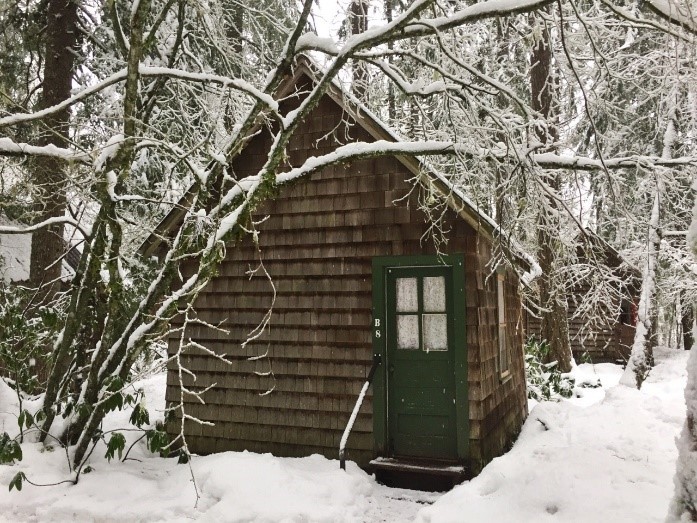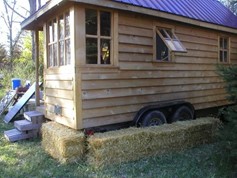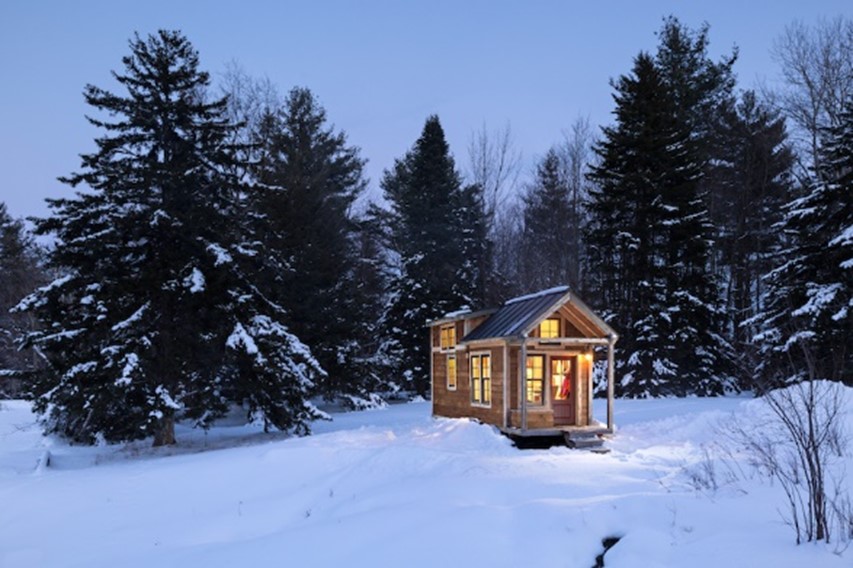18 Oct Get Your Tiny House Ready for Winter!
Depending on where you live, you might or might not encounter very cold temperatures this winter. If you do live in a place that sees very cold weather, you should consider winterizing your tiny home. Because not only can cold damage the home, it could cost you more by using extra energy to maintain a comfortable temperature. Some of these tips you might already be aware of, but there might be something you can use or share with other Tiny Housers.

Plumbing
Pipes can freeze overnight during winter, and it’s something that happens to tiny house owners as well. Just like in traditional housing, winterization efforts are crucial if you want to make sure your plumbing remains unaffected during winter.
Here are some common winterizing precautions in cold weather:
- Consider getting a propane blanket. Propane tanks can also freeze especially if they’re stored outside your home. To prevent this from happening, invest in a propane blanket.
- Insulate your spigot. The idea of wrapping insulation foam all over your spigot seems silly but it’s completely worth it, unless you enjoy hauling water directly into your tiny house every morning.
- Invest in a heated tape or cable. In place of insulation material, you can use heated tape or cable to wrap around pipes, spigots, and other plumbing fixtures to prevent them from freezing.
- Get a heated water cable. If you’re connected to a water supply, a heated cable can prevent your water supply from freezing by ensuring that the water supply is constantly heated.
- Get a self-starting water heater. If you’re living in temperatures below freezing, a self-starting water heater will prevent your appliance from breaking down in the coldest of temperatures. This is a necessity if you’re camping out in the coldest states with limited heating capabilities, including Alaska and Vermont.
- Holding Tanks. Whether your tiny is off-grid or not, if you have black and gray water holding tanks, you need to be sure you remember to winterize and protect them against the freezing temps of the season. Some opt for a heat lamp under their tanks to prevent them from freezing. You should also consider how you will drain your tanks when the temperature drops so if you are digging a drain line, be sure to plan to be able to dig beneath the permafrost line.
Many of these tips could apply to both traditional homes and tiny houses.
Skirting Your Tiny Home
By enclosing the area under your tiny home, it keeps the cold air out and allows you to warm up the enclosed air. That’s all skirting is, a way to close off the undercarriage of your tiny house so you can keep it warm enough to prevent it from freezing. Here are a few options for skirting:
- Engineered Canvas / Fabric/ Concrete Panels: There are many companies out there that make custom RV skirts. Advantages: Proven efficiency, snug fit, low maintenance and often covered by warranty. Disadvantages: Can be expensive.
- Rigid Foam: A DIY option. Purchase rigid foam boards from your local hardware store, cut to size, and secure around your trailer using tape.
- Plywood sheets:Plywood sheets (cut to size) can be used in areas which do not consistently experience freezing temperatures, but still wish to improve heat efficiency in their Tiny House RV. Recommended in Pacific Northwest or windy locations.
- Straw Bales:A cheap DIY option is to purchase straw bales and tuck them around your trailer. Tip: Wrap your straw bales with a trap or heavy duty trash bags for extra protection.

Humidity. It is especially important to protect your tiny from moisture problems during the winter months. Since tiny houses are much smaller than traditional homes, humidity can become a problem. Purchase a dehumidifier to help reduce humidity and/or keep a window cracked. If you find that there is a lot of condensation on your windows, wipe the excess moisture away when necessary.
Air Quality. An airtight home does reduce energy use and overall costs. However, it traps air. Check batteries in any carbon monoxide and smoke detectors. Air quality can be significantly reduced in winter because of the lack of airflow (the windows are most likely closed). Don’t forget to keep your carbon monoxide detector charged. You can also get an air quality monitor.
Insulate Your Windows.
Covering your windows with an insulating material such as solar shades or even a heavy drape can provide an extra layer of protection from the cold. While most tiny homes do offer double pane windows, because of the tendency to use more windows to allow for natural light to open up the home, it reduces the ability to keep the house insulated. If you plan to live in a chronically cold climate, opting for triple paned windows is probably the best investment.
Summary
Take the time and look at what’s in your home and think about how the cold may affect or damage it. Is there anything that can be done to winterize it? Proper planning and research can save time, money, and energy. Whether it’s a car, tiny home, or traditional dwelling, money and energy can be saved by taking the time to prepare smartly. Although a tiny house doesn’t use as much energy as a typical home, it’s still important to conserve energy wherever you can. Not only does it help the wallet, it helps the environment too.


Sorry, the comment form is closed at this time.